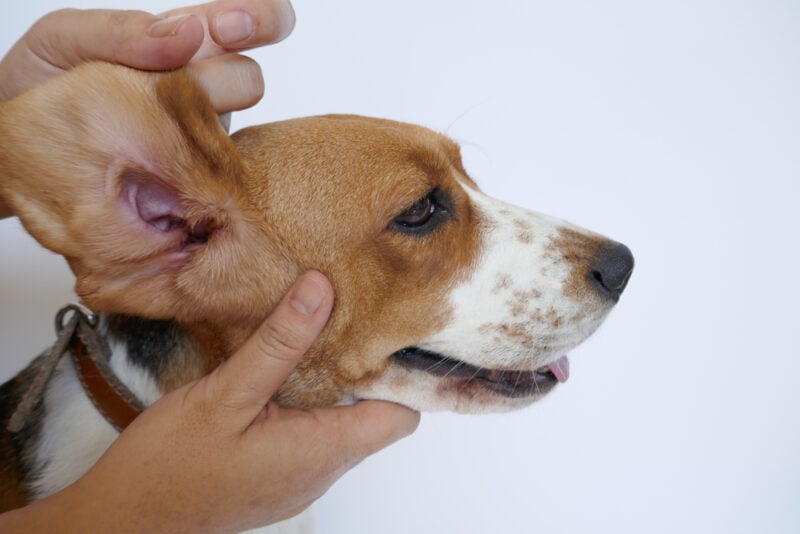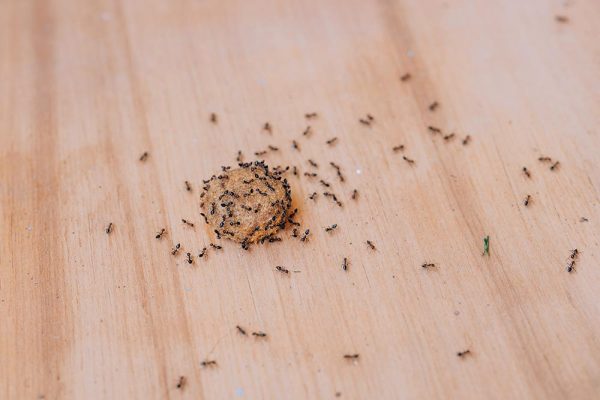In this article
Dog owners know that their pups seem to have super-powered hearing. As soon as a bag of food is rustled, no matter how softly, a dog anticipating it will gladly approach you. Dogs have incredible hearing, and their sensitive ears can become easily damaged at noise levels above 85 decibels.

How Does Loud Noise Cause Damage to a Dog’s Hearing?
Sound is processed in a dog’s ears the same way humans process sound. First, the sound is funneled through the outer ear and is sent into the ear canal.
Inside the ear canal, little hairs called cilia are in the cochlea. These tiny, sensitive hairs are what sound waves vibrate, which sends signals to the brain. These signals are interpreted as sound, but a loud noise can damage the hairs (sometimes irreparably).
How Cilia Are Damaged from High Decibel Sound
Cilia in the cochlea can be damaged by a one-time loud noise or repeated loud noise over an extended period. The hairs and the membranes within the cochlea are delicate; sounds over 85 decibels can cause damage by flattening these hairs and overstimulating them (like walking on blades of grass).
The cilia will slowly stand straight and begin to function again if recovery time is allowed, but if the noise is loud enough or is repeated, the cilia will die, and your dog will begin to lose its hearing.

Decibel Comparisons
Sound is measured in decibels (dB). There are many situations in which a dog can be exposed to loud noises (fireworks, dogs in kennels barking, etc.), and each has its own decibel level.
Some sounds you would expect to be loud because they can be painful for us to listen to, let alone our dogs. Sounds such as drilling or fire engine sirens are loud, but what about more mundane household sounds? There are a few sounds, such as the vacuum cleaner running and an alarm clock blaring, that are close to the 85 dB limit for dogs.
What Are the Signs of Hearing Damage in Dogs?
Although congenital deafness differs from hearing loss caused by damage to the ears, you may notice a few signs that your pet’s hearing was damaged by noise.
- Becoming less responsive/unresponsive to its name
- Becoming less responsive/unresponsive to everyday sounds
- Not woken by noises or being called
- Becoming startled if approached from behind or out of the dog’s immediate vision
- Changes in behavior, such as excessive barking or confusion when given a command
- Lack of ear movement (when they’d previously swivel or prick up at a sound)
If your dog is showing signs of hearing damage, we suggest you speak to a vet.
If you need to speak with a vet but can't get to one, head over to PangoVet. It's our online service where you can talk to a vet online and get the advice you need for your dog — all at an affordable price!

What Else Can Unhealthy Noise Levels Do to My Dog?
While loud sounds can cause temporary or permanent hearing loss to your dog, they can also be very disorienting and distressing, especially if they’re not used to loud noises. Loud sounds can also cause physical pain to your dog, particularly if they’re sensitive to sound.
Stress and anxiety can also be caused by exposure to loud noises, and the behavioral changes accompanying this can be life-changing for you and your dog.
What Range of Sounds Can My Dog Hear?
Dogs have excellent hearing and can hear a far wider range of sounds than humans. For example, dogs can hear in an approximate range of 67–65,000 Hz (hertz), which is staggering as humans can only detect up to 23,000 Hz with our ears.
For more comparison, a cat can hear up to 64,000 Hz, and a bat can hear up to a staggering 110,000 Hz.
It is worth mentioning that while high-pitched sounds that aren’t loud aren’t damaging to a dog’s hearing, they’re irritating, startling, and can be disorientating. That is why dog deterrents such as high-frequency sound makers work.


Conclusion
Dogs have a such incredible hearing to help them catch their “prey.” While the domesticated dog doesn’t have to hunt for its food, it still has a fantastic range of sound detection and frequency. This can be to a dog’s detriment, as any sounds louder than 85 dB can cause damage to a dog’s ears and even cause permanent hearing damage and loss, as well as causing physical pain and distress.
Therefore, it is best to protect your dog’s ears by keeping them out of situations where loud noise is inescapable, such as inside a vehicle with loud music.
Featured Image Credit: Ivan Mateev, Shutterstock



















